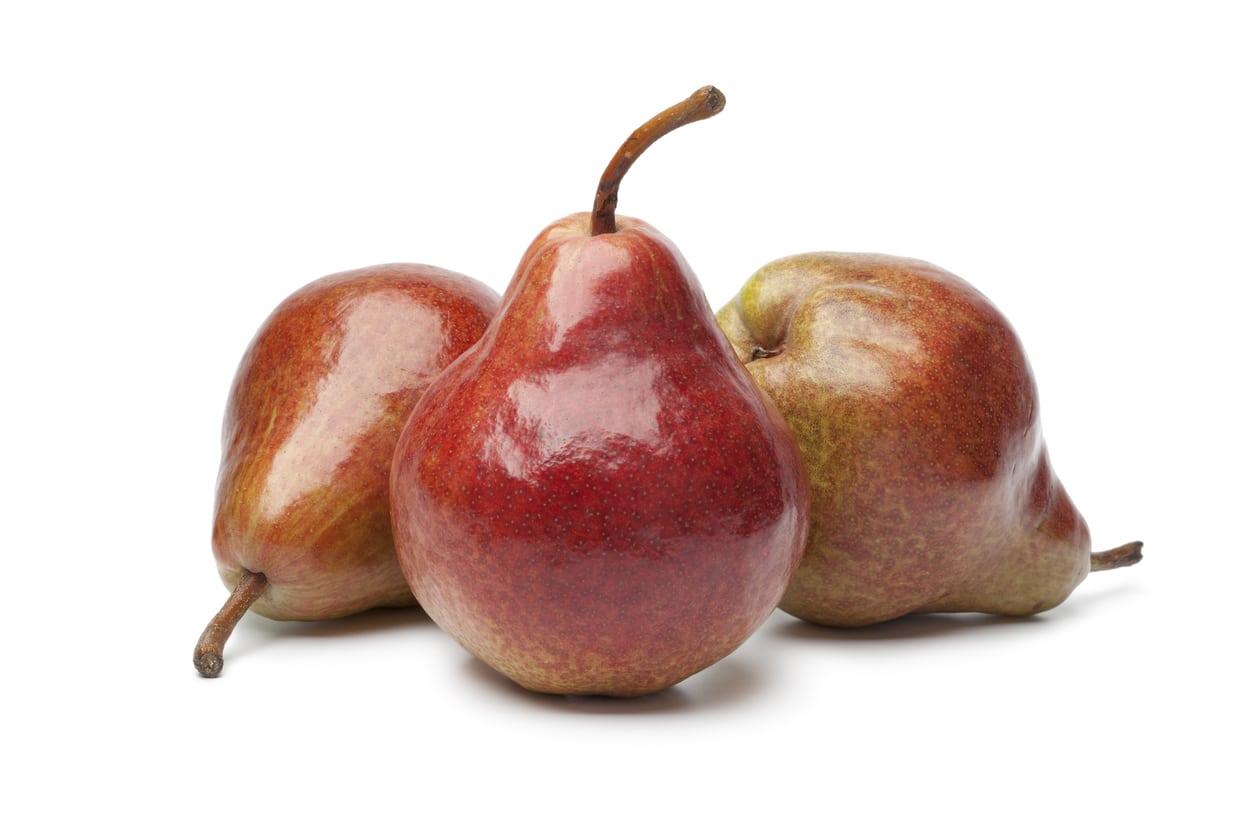What Are Red Bartlett Pears: Tips For Growing Red Bartlett Trees


What are Red Bartlett pears? Imagine fruits with the classic Bartlett pear shape and all that wonderful sweetness, but in hues of blazing red. Red Bartlett pear trees are a joy in any garden, ornamental, fruitful, and easy to grow. For tips on how to grow red Bartlett pears, read on.
What are Red Bartlett Pears?
If you are familiar with the classic yellow-green Bartlett pears, you won’t have any trouble recognizing Red Bartlett pears. The Red Bartlett pear tree produces typical “pear-shaped” pears, with a rounded bottom, a definitive shoulder, and a small stem end. However, they are red. The Red Bartlett was discovered as a “bud sport” shoot that developed spontaneously on a yellow Bartlett tree in Washington in 1938. The pear variety was then cultivated by pear growers. Most pears remain the same color from immaturity to maturity. However, yellow Bartlett pears change color as they ripen, turning from green to mellow yellow. Those growing Red Bartlett pears say that this variety does the same thing, but color evolves from a dark red to a brilliant red. You can eat Red Bartletts before they are ripe for a crunchy, tart texture, or you can wait until ripening is over and the big pears are sweet and juicy. The Red Bartlett pear harvest starts in late August or early September.
How to Grow Red Bartlett Pears
If you are wondering how to grow Red Bartlett pears, remember that these pear trees only grow well in USDA plant hardiness zone 4 or 5 through 8. So, if you live these zones, you can start growing Red Bartlett in your home orchard. For best results, plan on growing Red Bartlett pear trees in a full sun area of your garden. The trees require well-drained soil, and prefer loam with a pH level of 6.0 to 7.0. Like all fruit trees, they need regular irrigation and occasional feeding. While you may be dreaming of the Red Bartlett pear harvest when you plant your trees, you will have to wait a while. The average time for the Red Bartlett pear to bear fruit is four to six years. Don’t worry though, the harvest is coming.
Gardening tips, videos, info and more delivered right to your inbox!
Sign up for the Gardening Know How newsletter today and receive a free copy of our e-book "How to Grow Delicious Tomatoes".

Teo Spengler is a master gardener and a docent at the San Francisco Botanical Garden, where she hosts public tours. She has studied horticulture and written about nature, trees, plants, and gardening for more than two decades. Her extended family includes some 30 houseplants and hundreds of outdoor plants, including 250 trees, which are her main passion. Spengler currently splits her life between San Francisco and the French Basque Country, though she was raised in Alaska, giving her experience of gardening in a range of climates.
-
 My Homemade Orchid Fertilizer Always Brings More Blooms – Here's The Easy Recipe That Transforms Plants
My Homemade Orchid Fertilizer Always Brings More Blooms – Here's The Easy Recipe That Transforms PlantsScientist-turned-gardener Mary Ellen Ellis shares her tried-and-tested DIY orchid fertilizer recipe, plus more ingredients to try for healthy, happy plants.
By Mary Ellen Ellis
-
 Looking For Plants To Give You The Soft And Fuzzies? Try These 5 Fuzzy Leaf Plant Options
Looking For Plants To Give You The Soft And Fuzzies? Try These 5 Fuzzy Leaf Plant OptionsLovers of texture, drama, silver foliage and tactile plants will adore these special sensory garden additions. These fuzzy leaf plant options will leave you all aglow
By Susan Albert